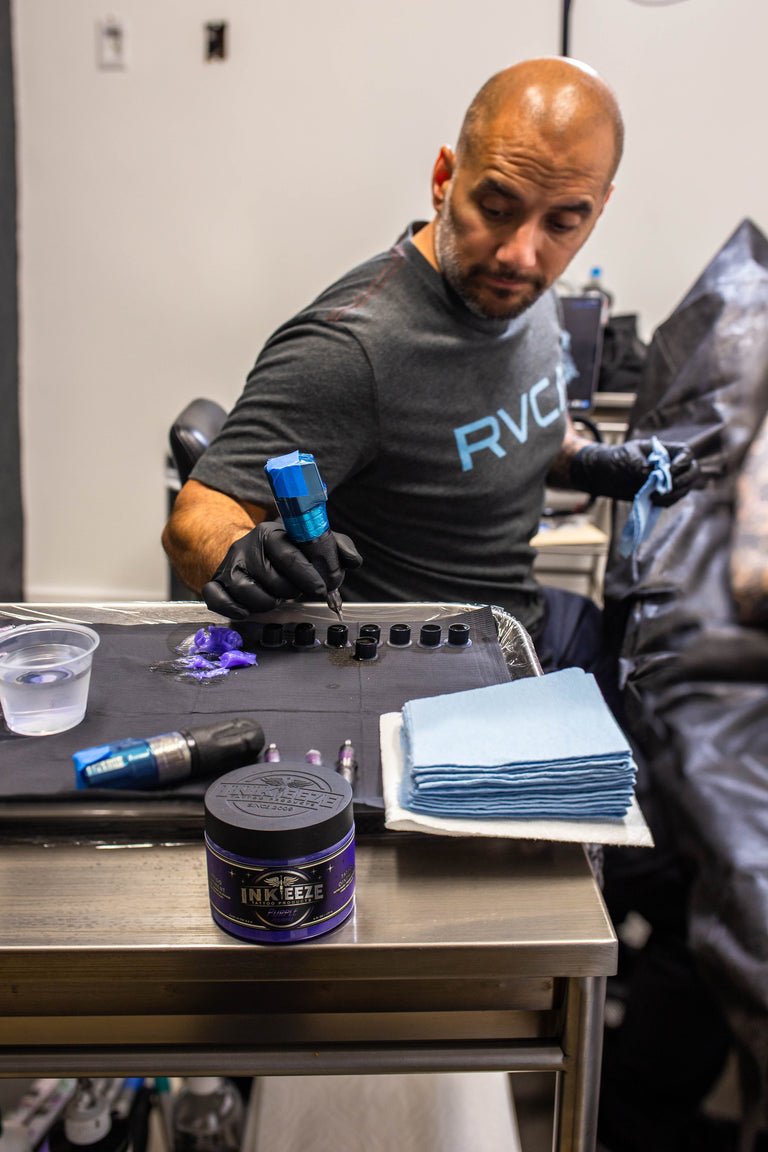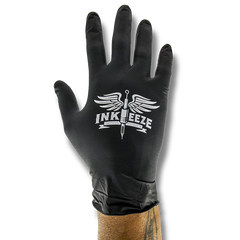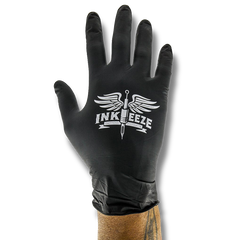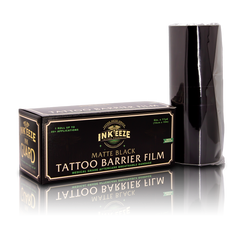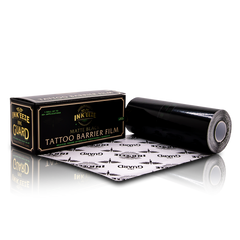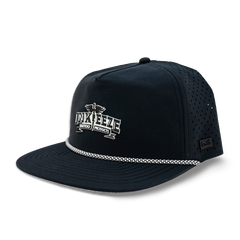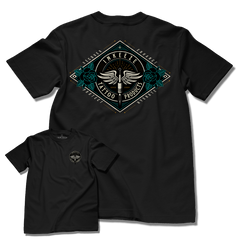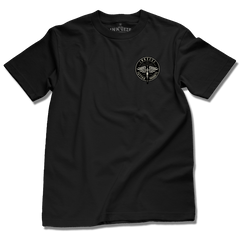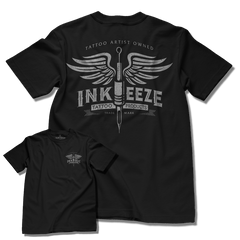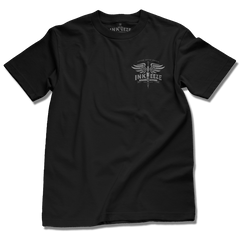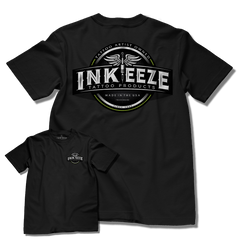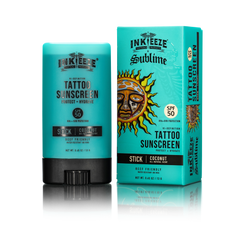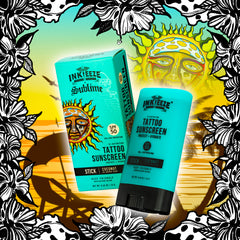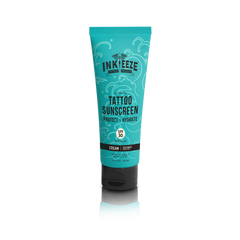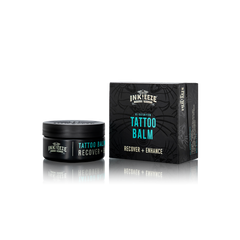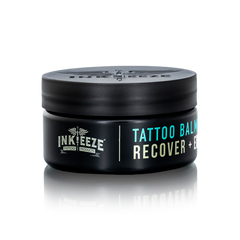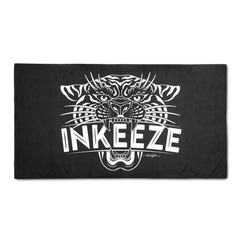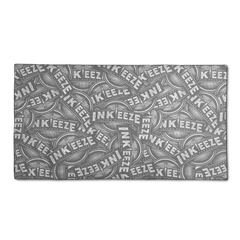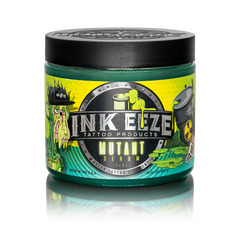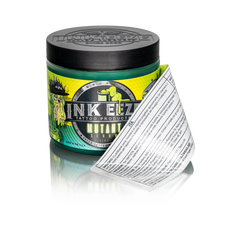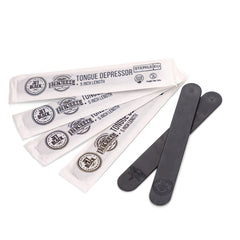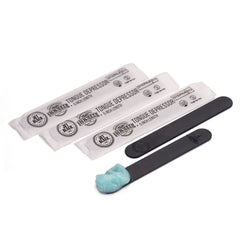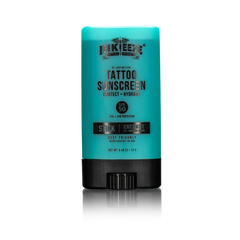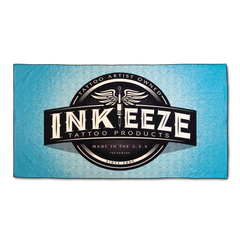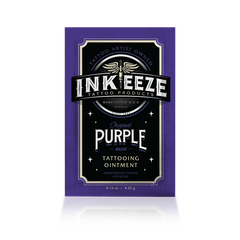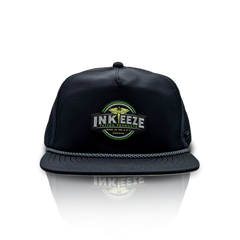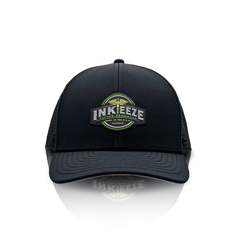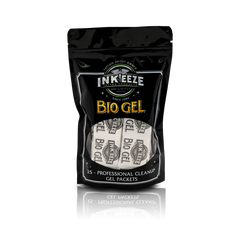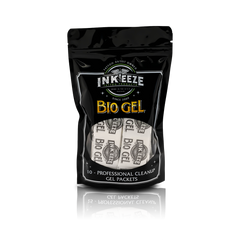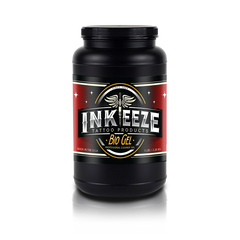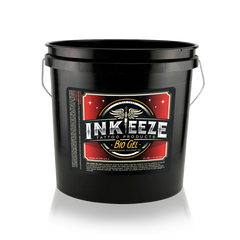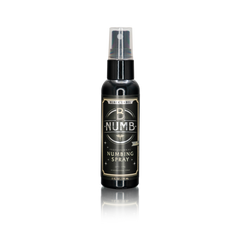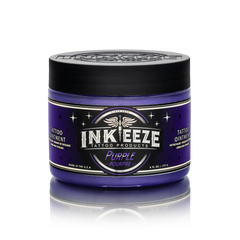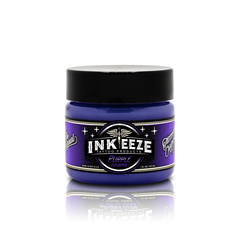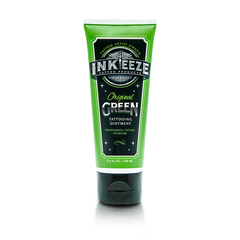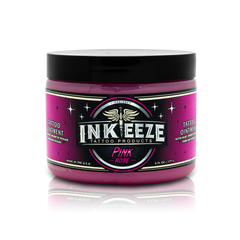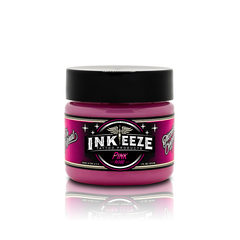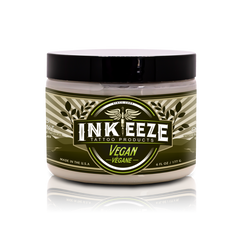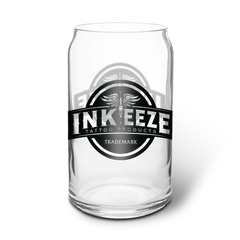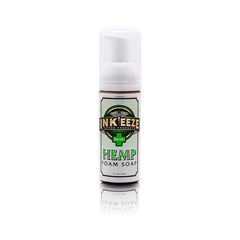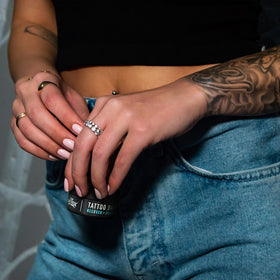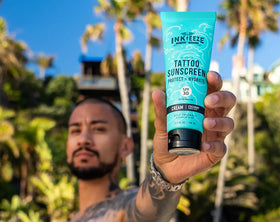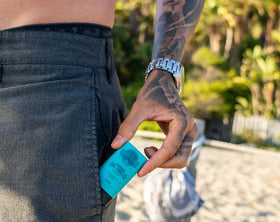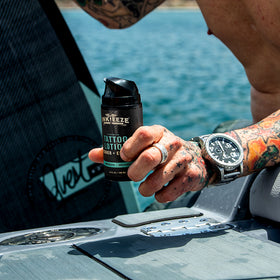This Article Delves into the Following:
-
The importance of creating and maintaining a safe and sterile tattoo environment
-
The tools and equipment needed for a safe and sterile tattoo environment. '
-
Preparing the tattoo station ahead of a client's appointment
-
An overview of the sterilization process and the methods used
-
Packaging, labeling, and storing sterilized tattooing tools and equipment
-
Best practices and common mistakes to avoid for safe and sterile tattooing
As a tattoo artist; you have an ethical and legal obligation to keep your customers safe during the tattooing process by maintaining a safe and sterile environment. This calls for, among other measures, sterilizing tattoo tools and equipment, cleaning and disinfecting work areas, using personal protective equipment, and observing tattoo safety regulations and best practices. Let's help you keep your tattoo parlor open and build a happy, healthy, and satisfied clientele by helping you understand the importance of a safe and sterile tattoo environment and how to create one. Let's get started!
Importance of a Safe and Sterile Tattoo Environment
Prevention of Infections
The tattoo needle often breaks down the skin as it penetrates the epidermis and the dermis, creating thousands of small, invincible wounds that can easily act as infection pathways. A sterile environment reduces the risks of harmful viruses or bacteria entering the body through these potential pathways, preventing infections.
Promotes Client Safety
A clean and sterile tattoo environment keeps your customer safe by minimizing or eliminating risks associated with tattooing, such as skin irritations, allergic reactions, and infections, boosting their confidence and guaranteeing you repeat business.
Bloodborne Pathogen Control
Tattoo artists are generally exposed to blood and other bodily fluids during tattooing. A safe and sterile environment, characterized by properly sterilizing and disinfecting surfaces/equipment and wearing personal protective equipment, can help prevent cross-contamination of blood pathogens, keeping blood-related diseases such as Hepatitis C and B at bay.
Regulatory Compliance
The Bloodborne Pathogens Rule by the U.S. Environmental Protection Agency (EPA) provides universal precautions that tattoo artists, similar to healthcare professionals, must follow. Most of these precautions entail maintaining a safe and sterile environment. By abiding by them, you get to avoid legal issues and maintain your license.
Professionalism and Trust
A safe and sterile environment also fosters trust between you and your clients by demonstrating professionalism and commitment to hygiene standards.
Essential Tools and Equipment for a Safe and Sterile Tattoo Environment
Apart from sterilizing your tattooing tools and equipment, you also need personal protective equipment and sterilization and disinfection tools. Note that these tools are meant to protect both the tattoo artist and the customer. Let's expound.
Personal Protective Equipment (PPE)
PPEs are used in different industries, mostly healthcare, to minimize or prevent exposure to various hazards, keeping users safe from injuries or illnesses. They include:
● Gloves
The exposure to body fluids such as blood during and after tattoo sessions puts you and your customer at risk of localized or bloodborne infections. Wearing disposable gloves during the tattooing session creates a protective barrier, reducing the risk of infection. Long tattooing sessions demand that you replace your gloves regularly for enhanced protection. Gloves should also be worn when cleaning or sterilizing equipment and disposed of properly afterward.
● Face Mask
A face mask is one of the most common yet extremely important personal protective equipment. Good ones like the FFP2 variety are highly recommended as they keep you safe from certain contaminants or pathogens that enter your body through the nose. They also minimize your chances of picking up respiratory diseases or passing them on to your clients. Remember to wash your hands thoroughly before and after wearing your mask to prevent cross-contamination. Proper disposal is equally important.
● Gowns
Gowns offer full-body coverage, creating a barrier against contaminants and other infectious materials commonly encountered during tattooing.
● Eye Protection
Your eyes are among the most important organs in your body and can act as entry points for bacteria or viruses if left unprotected. Use special protection equipment such as a full-face visor, goggles, or glasses with excellent coverage to keep them safe. Avoid readjusting your eye protection during the tattooing process to prevent chances of cross-contamination.
● Protective Apron
Protective aprons cover a large portion of your body, protecting you from splatter. They can also create uniformity and increase brand awareness if printed with your tattoo studio's logo. You can use disposable aprons or high-quality reusable aprons, which should be cleaned properly after use.
● Footwear
Closed, comfortable footwear helps keep your feet clean from dripping liquids or fluids and protects you from accidentally falling tattoo equipment. Avoid sandals, flip-flops, and similar options, as they do not offer full protection.
Sterilization and Disinfection Tools
Sterilization and disinfection tools help minimize, eliminate, or deconstruct infectious microorganisms on surfaces and equipment. While sterilization tools aim to eliminate or destroy microorganisms completely, disinfection tools reduce their number to a less dangerous level. Common tools in this category include autoclaves, surface disinfectants, barrier films, and sterilization pouches.
● Autoclaves
Autoclaves are used to sterilize tattoo needles, piercing equipment, and other reusable devices by killing bacteria or viruses present on them, curtailing their transfer from one person or surface to another. Most autoclaves in tattoo stations use high-pressure steam and can be used quickly and efficiently.
● Surface Disinfectants
Use surface disinfectants to clean your countertops, furniture, and workstations to rid them of contaminants or pathogens and, as a result, keep yourself and your customers safe. Note that there are three levels of surface disinfectants, i.e., low, intermediate, and high. Settle for an intermediate disinfectant for the best results.
● Barrier Films
Barrier films prevent contamination and cross-contamination during the tattooing process by keeping areas likely to be contaminated sterile. Consider using a barrier film to cover surfaces likely to be touched, such as your tattoo chair, trays, armrests, tattoo utensils, and lights.
● Sterilization Pouches
Sterilization pouches (peel packs) are disposable packages made of durable medical-grade papers with self-sealing strips used to store equipment meant to be sterilized. They should be stored in a dry, covered, and well-ventilated space.
Preparing the Tattoo Station
Here is how you get your tattoo station ready before a client appointment:
-
Cleaning and disinfecting the work area, surfaces, and furnishings using an intermediate surface disinfectant and applying a barrier film where possible.
-
Sterilizing all tattoo equipment to rid them of germs and bacteria. Remember to wash your hands thoroughly and apply an alcohol-based sanitizer before and after touching them to prevent cross-contamination.
-
Properly and safely disposing of any contaminated materials.
-
Ensuring proper lighting, arrangement, and equipment placement.
-
Procuring/ Ensuring that you have all the required supplies.
Sterilizing Tattoo Tools and Equipment
Overview of the Sterilization Process
The main aim of sterilization is to prevent infection following the use of an item by eliminating potentially harmful microorganisms such as germs and bacteria on its surfaces. It normally follows a multi-step approach, involving cleaning the equipment thoroughly with antibacterial soap and water, mechanical scrubbing and rinsing, and immersion in a high-level sterilizing solution/ chemical or an autoclave.
Types of Sterilization Methods
You can sterilize your tattoo equipment and tools using steam, Ethylene Oxide gas, or UV light. Let's expound.
Steam Sterilization
This is the most used sterilization method by tattoo artists, owing to the affordability of steam autoclaves. Like pressure cookers, autoclaves heat water to produce steam, which gets trapped, creating pressure buildup. The autoclave then runs for 30 minutes at a minimum pressure of 12 pounds- conditions that must be met for sterilization to happen. To confirm whether sterilization is complete, check whether the pouch has changed color, made possible by the built-in indicators.
Note that dry heat sterilization, a cheap technique that uses dry heat instead of steam, ceased to be recognized as a medical sterilization technique and shouldn't be considered an option.
Chemical Sterilization
Chemical sterilization or cold sterilization requires the immersion of the item to be sterilized into a liquid chemical approved by the EPA, such as peracetic acid, glutaraldehyde, or hydrogen-peroxide-based compounds. The process takes 8-24 hours, depending on the chemical used, and is preferred by dentists.
EO Gas Sterilization
This third sterilization method requires ethylene oxide, a colorless and flammable gas. It is a quick, sure, and efficient method of ridding equipment of germs and bacteria. However, gas autoclaves are costly and, as a result, are mostly available to hospitals.
UV Light Sterilization
UV light sterilization is a non-ionizing radiation technique that uses ultraviolet rays. Unlike ionizing radiation, which uses gamma rays, it may not sterilize objects all the way through owing to the length of ultraviolet rays, which limits their energy.
Packaging and Labeling Sterilized Tools and Equipment
Sterilized equipment should always be properly labeled, packaged, and stored.
Packaging
There are three main options to choose from when packaging sterilized tools and equipment, i.e., flat wrappers, sterilization containers, and paper/plastic peel pouches. Before choosing one, consider the sterilization method and the type of items being sterilized. Most tattoo artists use peel pouches made of paper, polyethylene, cellophane, or other paper-plastic combinations. They are clear on one side and are intended for single use.
Conversely, flat wrappers are usually woven or non-woven, meaning they can be made of cotton, cotton/polyester blends, cellulose fibers, or plastic polymers. They should cover the sterilized item completely without leaving excess material for excellent results. Lastly, sterilization containers are meant for reuse. They can be disassembled and cleaned manually or mechanically and are often used to sterilize several items simultaneously. However, they need quality checks and routine maintenance.
Labeling
According to the Centers for Disease Control and Prevention, packages should be labeled with the sterilizer used, date of sterilization, cycle/load number, and expiration date (if applicable) before being placed in the sterilizer.
Storage
Sterilized supplies or instruments should be stored in closed or covered cabinets to avoid exposure to contaminants. You should inspect wrapped packages containing sterilized equipment before opening or using them to ensure they are intact and that the item has not been compromised.
Best Practices for Safe and Sterile Tattooing
Safe and sterile tattooing demands hand hygiene, safe injection techniques, and avoidance of cross-contamination. Let's explain these further.
Hand Hygiene
Hand hygiene can be achieved and maintained through handwashing and sanitization. You should wash your hands before and after physical contact with your customer, before wearing and removing PPEs such as face masks or gloves, and after contact with bodily fluids, blood, and contaminated surfaces. Feel free to try our Hemp-based cleansing foam soap, made with special ingredients to sanitize and decrease bacteria on the skin before, during, and after the tattoo process. Additionally, make it a habit to apply an alcohol-based hand sanitizer after washing your hands.
Avoiding Cross-Contamination
To prevent the spread of bacteria and viruses from one surface to the next, wash your hands before and after tattooing, wear gloves while handling equipment or working with clients, and clean your hands thoroughly before wearing and removing gloves.
Safe Injection Techniques
Safe injection demands proper needle selection, the right injection depth, and a good needle angle.
● Needle Selection
There are several types of tattoo needles, all having their use cases, benefits, and challenges. Use liners for highly intricate or detailed work; round shaders for circles; magnums for filling large areas that require only a single color; round liner needles for crisp, strong lines and flats for giving depth to one-tone colors.
● Injection Depth
The tattoo needle should not go further than the dermis, which requires a penetration of roughly 1-2mm or 1/16th of an inch into the skin.
● Needle Angle
Several tattoo artists have observed that keeping the needles in the tube at an angle of 45-60 degrees, especially with smaller groupings, produces consistent results when applying lines. Angles less than 45 degrees are usually considered shallow, and even though they can be useful in certain applications, it's best to avoid them, especially when running lines, as the needle doesn't penetrate to the correct depth unless buried.
Common Mistakes to Avoid in a Safe and Sterile Tattoo Environment
The following may compromise the safety and sterility of your tattoo environment and should, therefore, be avoided:
-
Neglecting personal protective equipment such as gowns, eye protection, face masks, and gloves.
-
Improper sterilization and disinfection techniques. Make it a point to autoclave, disinfect surfaces, and use tools such as barrier films and sterilization pouches.
Conclusion
Maintaining a safe and sterile tattoo environment should be among your top priorities as a tattoo artist. Such an environment minimizes/ prevents infections, aids bloodborne pathogen control, promotes client safety, demonstrates professionalism, and keeps your doors open. At Inkeeze, we offer a range of products to help you create and maintain a safe and sterile tattooing environment. Kindly check out our catalog and get in touch with us.
Frequently Asked Questions (FAQs)
What are the Consequences of not maintaining a Safe and Sterile Tattoo Environment?
Failure to maintain a safe and sterile tattoo environment can lead to consequences, such as increased risks of skin infections, bacterial/viral diseases, and allergic reactions, as well as the transmission of bloodborne diseases such as hepatitis and HIV. It can also lead to legal repercussions, prompting license revocation or reputation damage, leading to loss of clients and subsequent closure of the business.
What Type of Autoclave is Recommended for Tattoo Studios?
Settle for the steam autoclave if you are equipping or furnishing your tattoo studio. It is highly affordable and effective.
How Often Should the Work Area Be Cleaned and Disinfected?
The work area should be cleaned and disinfected thoroughly before and after every tattoo session. It is also important to clean and disinfect regularly, even without scheduled clients, to ensure high hygiene standards and reduced contaminant buildup.
What is the Best Surface Disinfectant to Use in a Tattoo Studio?
Use intermediate-level surface disinfectants for your tattoo studio to kill a wider range of pathogens.
What Type of Gloves Should Be Used in a Tattoo Studio?
You should wear nitrile gloves in a tattoo studio. They are stronger and "more mobile" than latex or vinyl gloves and offer protection against surface contamination, germ transmission, and infections.
Can Hand Sanitizer Be Used as a Substitute for Handwashing?
Even though hand sanitizers (with the right alcohol content) can help kill germs, bacteria, and microbes, you shouldn't stop washing your hands thoroughly with an antibacterial soap. Sanitizers should be applied after a thorough handwash.
What Type of Face Masks Should Be Used in a Tattoo Studio?
Surgical masks made from non-woven fabric offer the best protection against contaminants or disease-causing germs. They must be properly handled and disposed of after usage to prevent cross-contamination. Check out our Inkeeze 4-layer disposable face mask.
What Type of Aftercare Should Be Recommended to Clients After a Tattoo Session?
Encourage your customers to wash the tattoo area gently with antimicrobial soap and water after undressing it (after 24 hours). They should then apply a thin layer of antibacterial ointment twice daily.
How Important Is Staying Up to Date with Tattoo Regulations?
Staying current with tattoo regulations helps you remain compliant with evolving (applicable) standards and regulations, saving you from legal repercussions. It also helps you adapt to tattooing best practices and maintain professionalism, building your clients' trust.
